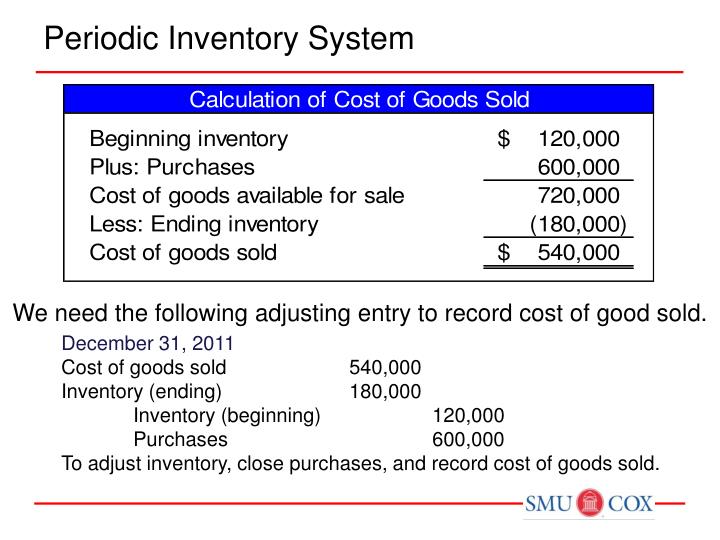
If accounting for sales and purchase is kept separate from accounting for inventory, the measurement of inventory need only be calculated once at the period end. This is a more practical and efficient approach to the accounting for inventory which is why it is the most common approach adopted. Seamless integration between inventory management and accounting systems ensures FIFO calculations are correctly reflected in financial reports.
- Warehouse management refers to handling inventory and similar tasks within a warehouse environment.
- You would multiply the first 10 by the cost of your newest goods, and the remaining 5 by the cost of your older items to calculate your Cost of Goods Sold using LIFO.
- Certain chemicals, when left to sit, risk degrading, becoming unstable, or forming hazardous byproducts—all of which compromise product quality and human safety.
- It also keeps the warehouse from getting overstocked with obsolete items.
Why Is the FIFO Method Popular?
In the first example, we worked out the value of ending inventory using the FIFO perpetual system at $92. On 2 January, Bill launched his web store and sold 4 toasters on the very first day. The wholesaler provides a same-day delivery service and charges a flat delivery fee of $10 irrespective of the order size. Finding the value of ending inventory using the FIFO method can be tricky unless you familiarize yourself with the right process. On 31st December 2016, 600 units are on hand according to physical count.
How Is the FIFO Method Calculated?
In some cases, a business may use FIFO to value its inventory but may not actually move old products first. If these products are perishable, become irrelevant, or otherwise change in value, FIFO may not be an accurate reflection of the ending inventory value that the company actually holds in stock. Using the FIFO method makes it more difficult to manipulate financial statements, tax withholding estimator which is why it’s required under the International Financial Reporting Standards. Depending upon your jurisdiction, your business may be required to use FIFO for inventory valuation. FIFO is the best method to use for accounting for your inventory because it is easy to use and will help your profits look the best if you’re looking to impress investors or potential buyers.
What Is the FIFO Inventory Method? First-In, First-Out Explained
Upgrade your business operations with modern software solutions tailored to your needs. Rohit Rajpal is an accomplished writer with a deep understanding of technology, digital marketing, and customer service. He brings extensive expertise in ERP and CRM systems, blending technical insight with clear, engaging content. Rohit’s work bridges the gap between complex concepts and accessible communication for diverse audiences. Inventory is valued at cost unless it is likely to be sold for a lower amount.
LIFO can offer tax benefits when prices are rising by showing reduced profits on paper. The FIFO method offers accuracy in profit margins, simplifies cost calculations, aligns with international standards, and provides up-to-date inventory data. While it may lead to higher taxes during inflation and struggle with price volatility, its benefits often outweigh these challenges.
Now that we have ending inventory units, we need to place a value based on the FIFO rule. To do that, we need to see the cost of the most recent purchase (i.e., 3 January), which is $4 per unit. On 3 January, Bill purchased 30 toasters, which cost him $4 per unit and sold 3 more units.
In normal economic circumstances, inflation means that the cost of goods sold rises over time. Since FIFO records the oldest production costs on goods sold first, it doesn’t reflect the current economic situation, but it avoids large fluctuations in income statements compared to LIFO. As the price of labor and raw materials changes, the production costs for a product can fluctuate.
Accounting software offers plenty of features for organizing your inventory and costs so you can stay on top of your inventory value. Learn more about the difference between FIFO vs LIFO inventory valuation methods. FIFO is straightforward and intuitive, making it popular as an accounting method and useful for investors and business owners trying to assess a company’s profits. It’s also an accurate system for ensuring that inventory value reflects the market value of products.
Additionally, properly labeling and storing all of your inventory with identification markers such as batch numbers, expiration dates, or production dates is especially helpful for FIFO. Organizing your inventory systematically enables you to quickly locate items that have been in stock for a longer time and prioritize them for sale or use. You can simplify these processes with inventory and order fulfillment software to automate tasks like inventory tracking, label creation, and product categorization. FIFO can also help warehouse managers with inventory analysis for more accurate inventory records.